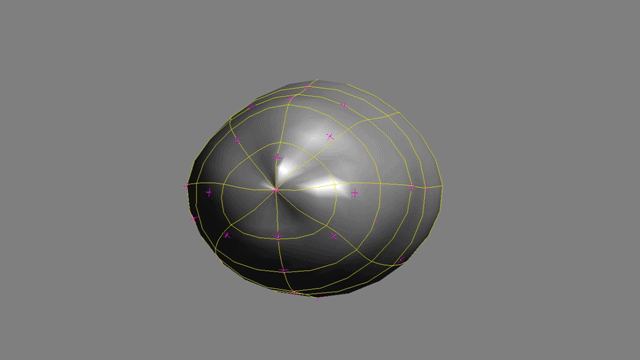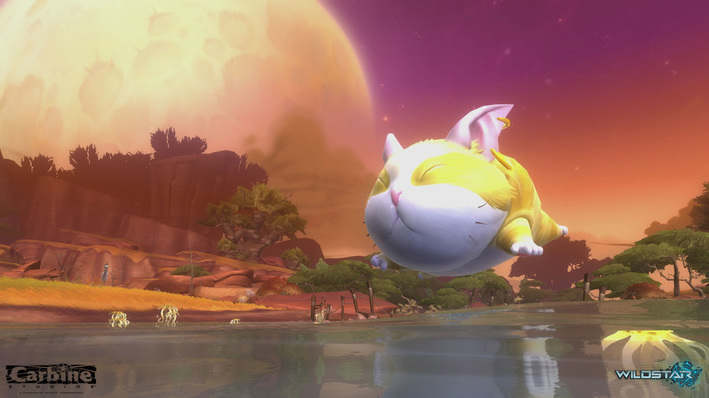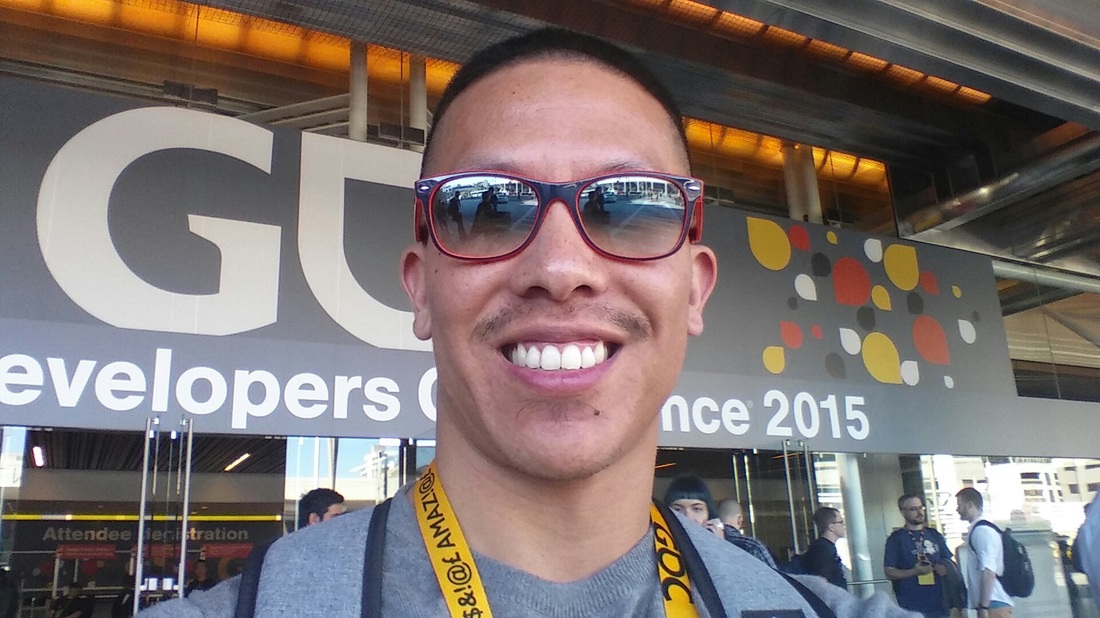How did Snarfelynx get so fluffy??
First off, I'd like to give credit to the many artists at Carbine Studios who made Snarfelynx so awesome:
Concept - Jeff Merghart
Model / Textures - Brandon Dix
Animation - Chris Hale
FX - Jeff Tse
Sound - Greg Meader
Now, on to the rigging of Snarfelynx! This guy was fun because he wasn't built with strict anatomical structure in mind. The art direction was to make him 'big and fluffy,' more like an amorphous blob than an actual cat. This made rigging him really fun because there was a lot of creative freedom on how to approach the rig.
One of our senior technical artists, Chris Luckenbach (http://www.baalrog.com), showed me a technique he had used on a different creature in WildStar that I felt would be well-suited for Snarfelynx. The technique is similar to the ribbon-IK setup that is pretty commonly used in toon rigging. The entire rig is driven by a NURBS proxy that fits Snarfelynx's primary mass. Anyone who's used NURBS before knows that they have strengths and weaknesses, but in this case it was the perfect solution for the performance we had in mind!
Here's a fun doodle to break it down:
Concept - Jeff Merghart
Model / Textures - Brandon Dix
Animation - Chris Hale
FX - Jeff Tse
Sound - Greg Meader
Now, on to the rigging of Snarfelynx! This guy was fun because he wasn't built with strict anatomical structure in mind. The art direction was to make him 'big and fluffy,' more like an amorphous blob than an actual cat. This made rigging him really fun because there was a lot of creative freedom on how to approach the rig.
One of our senior technical artists, Chris Luckenbach (http://www.baalrog.com), showed me a technique he had used on a different creature in WildStar that I felt would be well-suited for Snarfelynx. The technique is similar to the ribbon-IK setup that is pretty commonly used in toon rigging. The entire rig is driven by a NURBS proxy that fits Snarfelynx's primary mass. Anyone who's used NURBS before knows that they have strengths and weaknesses, but in this case it was the perfect solution for the performance we had in mind!
Here's a fun doodle to break it down:
The NURBS proxy has it’s own rig (the NURBS rig) that an animator can use to sculpt Snarfelynx's overall shape.
Surface constraints are used to lock down null objects (locators) to the NURBS surface. These null objects can be used to constrain joints, controls, groups, etc. Anything that we want to follow a specific point on the surface can be constrained to these nulls.
Next comes the Control rig, which is where the pieces start coming together. The NURBS rig is great for deforming the shape, but we also need some controls for anatomical parts such as the limbs, tails, facial controls, clavicles, and hips.
Finally, we constrain all of the BIND joints to the control rig and/or surface nulls which gives us our final product! The technique is fairly simple in concept, however it can be complex in it’s structure. It's important to have things organized in a way that can be easily broken down for future use.
We take great pride in our work at Carbine Studios. A special thanks goes to the studio heads, Chad Moore & Mike Donatelli, for encouraging me to post about my contribution to WildStar.






 RSS Feed
RSS Feed
